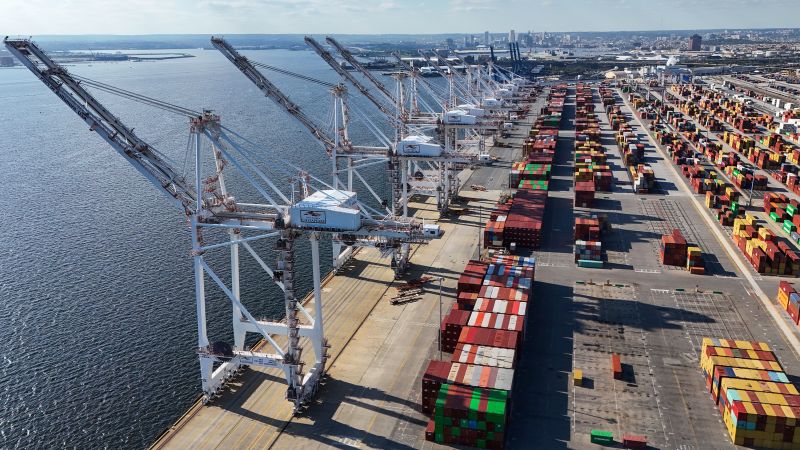The potential crippling strike at the United States’ East and Gulf Coast ports came to an end after just three days, with limited damage to the American economy. The strike, which involved the International Longshoremen’s Association representing 50,000 members, threatened to disrupt supply chains and temporarily cut off American exports. Many shippers had moved their goods ahead of the strike deadline, minimizing the damage caused by the work stoppage.
The key dispute in the strike was the scale of wage increases, which was quickly resolved with the United States Maritime Alliance (USMX) agreeing to raises of $4 an hour. This immediate raise of just over 10% would be followed by additional $4-per-hour raises every year for the life of the six-year tentative deal, resulting in a total raise of $24 an hour or 62% in total. The union had been willing to consider the $4-an-hour deal before the strike, but rejected the company’s $3-an-hour offer.
Ships were anchored offshore waiting to come into ports from Maine to Texas to load and unload goods, and workers were eager to limit their loss of income. The strike was suspended, and the previous contract was extended as negotiations continued. While goods are expected to return to normal flow eventually, recovery from the strike may take three to five days as ports work to position containers and handle the backlog.
Despite the strike affecting the largest ports like the Port of New York and New Jersey and the Port of Virginia, efforts are being made to resume activities, with the ports planning to add weekend hours to deal with backlogs. The strike did not impact the flow of emergency supplies to hurricane-affected areas, as foreign vessels are not allowed to transport goods between US ports under maritime law.
The Port Authority of New York and New Jersey incurred significant economic losses of between $250-300 million per day during the strike. The port’s director noted that the unloading of containers from ships would resume in the evening, with over $1 billion in economic losses due to the four-day inactivity. There were 24 ships at anchor waiting to unload at the Port of New York and New Jersey, with additional inbound containers totaling 35,000.
While the deal reached on Thursday may likely end the strike, the final contract language will need to be ratified by the union’s members for it to take effect. Rejection of the tentative labor deal by the union’s rank-and-file members could lead to the possibility of another strike in the future. This was demonstrated in a recent case where union members voted against a tentative deal between the International Association of Machinists and Boeing, leading to an ongoing strike since September 13.













